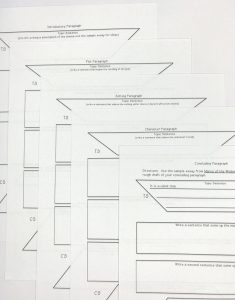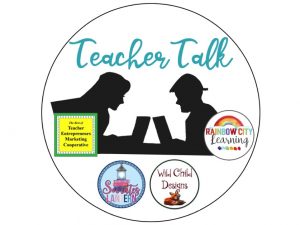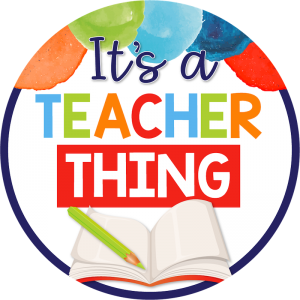
Differentiation is always at the forefront of my mind. As teachers, we never get a class with students at the exact same level in every skill we teach. This is impossible. Differentiation is simply making instruction and work more accessible to all students. There’s no mystery behind it, and it’s probably a lot easier than you think. The bottom line is that you are setting kids up for success. Here are five simple ways to differentiate in your 4-8 grade classroom.
1. Break down instruction into manageable steps
Some students need to see the step-by-step process a little at a time. I always write the task directions down so they’re visible to everyone, but I keep the steps short and I number each step. Some students may benefit from having the steps written and numbered on post-it notes and then placed near his/her work area. You can also target just one step at a time so your reduce the possibility of students getting overwhelmed by seeing all the the tasks at one time.
2. Read part of the text with the student
If your assigned work requires reading some sort of text, you have many options for differentiation. One of the easiest and most successful methods of differentiation is to read with them. I’ve seen many students shut down because they are overwhelmed by the reading required to do the task. There are several ways to solve this issue:
1. I do a whole-class read aloud for part of the assignment to boost accessibility to the text.
2. I kneel down next to a student’s desk and read aloud to them.
3. I use strategic reading partners where I buddy up a confident reader with one that struggles.
4. I may have an audio version of the text available.
5. I pull a small group to the group table and read the text with them. Chances are, after you’ve read a few sentences or a few paragraphs, many students will feel less stressed and pick up where you leave off.
The bottom line is that you are setting them up for success. If the text is far higher than the student reading level, strategic partner work or teacher-directed small group work are good options. Here’s a great blog post about supporting struggling readers.
3. Offer writing frames if you’re asking for a written response
Whether you are asking for a sentence or two or a paragraph or two, it’s often starting the writing task that’s most overwhelming for struggling students. As the teacher, you can opt to help with the topic sentence. Perhaps you brainstorm several sentences that may be used to begin the writing assignment. In my experience, I have learned that quite often it’s the first sentence that’s the hardest. Get it out of the way so the work can begin.
For longer pieces of writing, offering a writing frame reduces writing anxiety. I do this with most expository writing. It’s crazy, but once kids see the shapes for sentences, longer writing pieces become less of a monster. You can see an example here from my Literary Analysis Writing Unit. I have each paragraph framed. On the top page you can see that I’ve written in a sentence starter and target questions for each sentence.

Writing frames help reduce student anxiety.
4. Limit answer options on assessments
On multiple-choice tests, instead of four answer choices for each question, give only three. Read through the answer choices and take out the one that may create the most confusion. When I give a multiple choice test, I always make two versions: modified and non-modified. Those who need more support may opt for the modified option. I discretely offer the modified option to a select group, and I let them know that their score won’t be as high if they take the modified test. By the same token, I’ll offer advanced options to those students who may need more of a challenge. So instead of doing multiple questions, give them one longer higher-level question. You can often find these at the end of a section of reading, or you can create them yourself.
5. Offer multiple ways for students to show their understanding
Not everything has to be written. You can offer a verbal response assessment. Also, students can act out or sketch out a scene to show their learning. Perhaps it’s a cartoon that they create or a recording that they make and send to you. Be prepared to offer students a variety of ways to share their knowledge.
Keep it timely
You can often find me at my group work station offering remediation on an assessment I’ve just given students. Just remember that when you assess students, a timely turn-around on graded work is essential. Keep it relevant and present. Don’t wait a week to respond to student work, especially those students needing supports.
Differentiation is an essential part of any classroom. It also helps you build relationships with those students who may be the ones creating issues in your classroom. For more information on building relationships with your students, see this informative blog post.
When you differentiate, students recognize that you care about them and their educational journey.
There are so many other ways to differentiate. Look for future blog posts with more ideas to help you set your students up for success.
I’m linking up with a group of amazing bloggers this month. Click the link for more great information.




Such a helpful post for making your classroom differentiated. You’ve made it so easy to understand and implement. Happy New Year.
These are great tips for differentiating the curriculum! Thanks for the easy breakdown of steps and reminders! Your “Building Relationships” resources looks terrific!